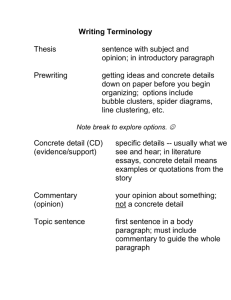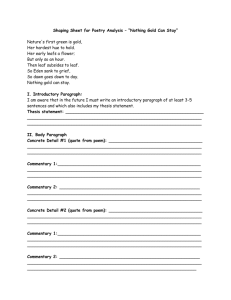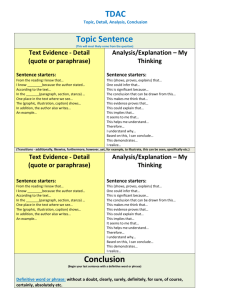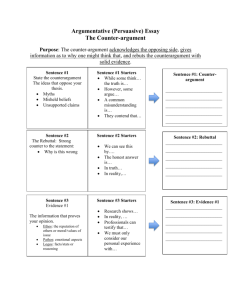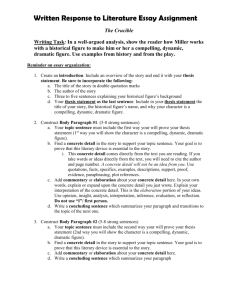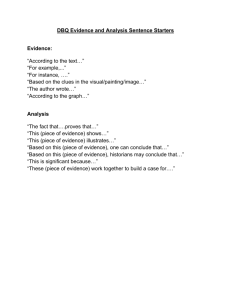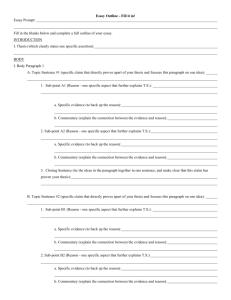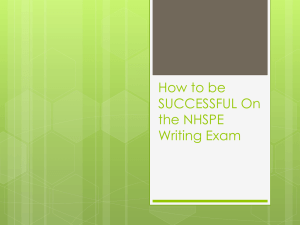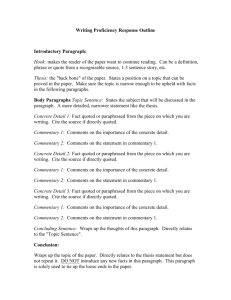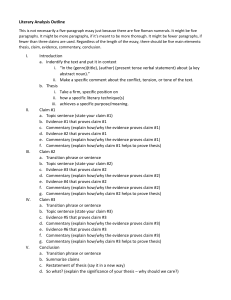Persuasive Writing Sentence Review
advertisement
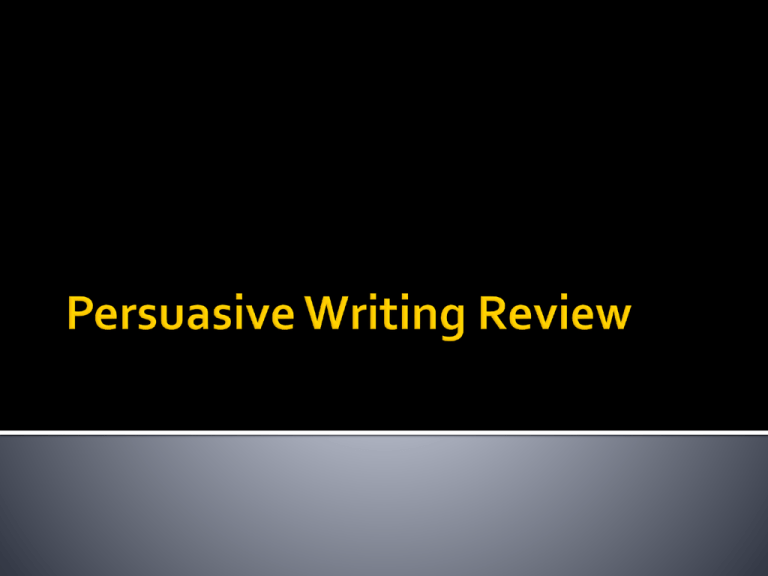
State your main reason from your thesis. This tells the reader what your paragraph will be about. What concrete details will help prove your thesis? Quotations (taken from an interview or article) Anecdote (short story taken from personal experience) Specific Example (from your own experience and/or knowledge) Statistic or fact that proves your point (researched from an expert source) Sentence Starters: “One example is…” “One fact that supports this is…” “A specific example that proves this is…” Now, explain how each concrete detail proves your main point. Commentary Sentence Starters: “______ is important because…” “This quote shows…” “This fact demonstrates…” “This means…” “This proves…” Wrap up what you’ve said in the paragraph, without repeating anything. Concluding Sentence Starters: “As can be seen…” “It is clear that…” “Clearly it is true that…” “It is obvious that…” “One can conclude that…” Show that you understand the opposite viewpoint of your position, and then counter it (respond with a rebuttal) by: Providing contrasting evidence or finding mistakes and inconsistencies in the logic of the opposing argument. Providing facts that clearly prove your opinion and disprove the opposite view Sentence Starters: While I can not argue that… Even though… I agree that… While it is true that… I cannot argue with… Granted… Admittedly… Reword your thesis and main points from your essay, without repeating anything, in 1-2 sentences. End with a strong “call to action” statement Tell the reader what must be done. What are the next steps? Introduction Paragraph Hook Brief Background Info. Thesis (last sentence of the introduction) Body Paragraphs (1-3) Topic Sentence Concrete Detail Commentary (2 sentences) Concluding Sentence • Counterargument (4th Body Paragraph) – Topic Sentence (Stating opposite opinion) – Rebuttal/Concrete Detail – Commentary – Concluding Sentence • Conclusion – Reword thesis – End with a call to action
